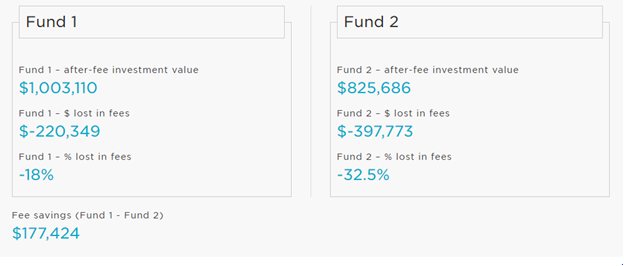ScaredyCatGuide to Investing - One Simple Way To Increase Your Retirement Nest Egg
Would you like to see your retirement portfolio grow bigger without having to increase your current contributions? I know I would and there is one simple way to make this happen because it's about spending less as opposed to contributing more!
Do You Even Know What You Are Paying In Fees?
Many people are paying up to 1% more in management fees on their retirement investments then they should be and the simple answer is because they just don't realize they have cheaper options.
There are so many investment vehicles nowadays that anyone who is paying 2% in management fees on their retirement portfolio is essentially throwing money away.
With all the selections of ETFs and no load funds there is no reason to be paying high fees. Ideally you want your fees to cost around 1% or so of your portfolio.
Let me show you a quick example of how lowering your expense ratio drastically impacts the size of your retirement nest egg.
Fund 1 has a 1% total cost in fees while Fund 2 has 2%.
Both funds invest 10k each year for 30 years and assume an average annual return of 8%
See the difference?
Fund 2 has a return of $177K less due to that "measly" 1% more in fees.
Conclusion
Please call up your broker, human resources, fund manager - a.k.a. whoever administers your investments and look into what your fee structure is and what lower cost options are out there.
Note: I did a more involved post on this months back. This is a simplified example for ease of use. You can find the previous post here if you wish to dig in to the detail of management expenses: How 1% is financially killing you
Regards,
Thanks for the pic pixabay
Information in this post is for educational purposes only.


It can be even better than this. I found this really neat tabulation of the 100 lowest cost (US based ETFs) which shows costs below 0.1% - so you can almost double the savings you have shown in your calculations. Now these funds are from reputable suppliers who are going to be around for the long haul. And they cover a wide range of investment ideas.
A small sample of the cheapest and here is the link
http://etfdb.com/compare/lowest-expense-ratio/
Readers do need to be aware that they have to pay the spread when they buy and sell and trading costs. In the US these are generally very low and very competitive. There is also credit risk - choose funds from well established suppliers
Yes, these days you can really grind the fees to practically nothing assuming you are not limited to select funds like in the case of some 401(k) plans. Thank you for putting the additional info in the thread.
Thank you for sharing your expertise with us:)
My pleasure, thank you for reading.
This post has been ranked within the top 80 most undervalued posts in the first half of Dec 06. We estimate that this post is undervalued by $6.98 as compared to a scenario in which every voter had an equal say.
See the full rankings and details in The Daily Tribune: Dec 06 - Part I. You can also read about some of our methodology, data analysis and technical details in our initial post.
If you are the author and would prefer not to receive these comments, simply reply "Stop" to this comment.